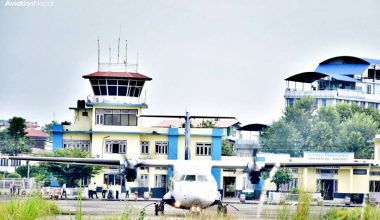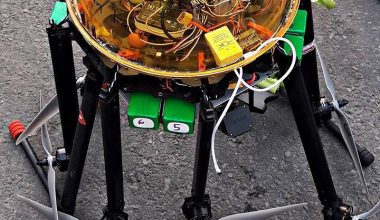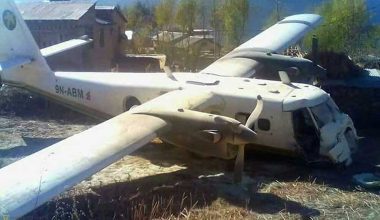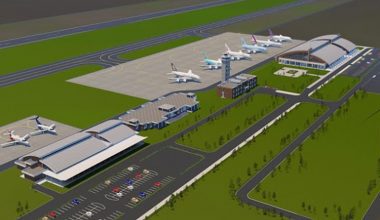The fuel dumping process is relatively standard in the aviation industry; many aircraft dump the fuel before landing at the specified destinations to drop the weight. Every airplane has a Maximum Landing Weight(MLW), which is usually lesser than the Maximum Take-off Weight(MTOW), so the pilots dump fuel to reduce the aircraft’s weight to the limit it doesn’t exceed the landing weight capacity.

As for landing a plane is more stressful on the aircraft than taking off; the excessive weight even adds more stress to the aircraft when landing. The threshold at which the aircraft can sustain the hard landing without taking any damage is very significant to maintain the health of the aircraft. During the routine flight, the plan is to burn the aircraft’s fuel to the level below the MLW when it reaches its destination. However, when the aircraft doesn’t match the required weight limit or makes an emergency landing, the flight crew has to eliminate the excessive weight that could affect the aircraft in the heavy landing. In cases where the dumping fuel becomes necessary, there are procedures to be followed by the pilots before ejecting the extra fuel. Air traffic controllers advise the pilots for the appropriate fuel dumping areas where there are fewer civilizations, and the area is isolated from any kind of operations; after reaching the required level of elevation, pilots then dump the fuel that evaporates before reaching the surface.
Also Read: MID- AIR AMMUNITION DUMP ON A UNITED AIRLINES FLIGHT
Does Dump Fuel Rains Down?
When one hears the pilot dumping fuel on-air practice, questions indeed arise like whether the dumped fuel pours down like rain? In fact, yes, it is the standard practice of dumping the fuel on the ground. There aren’t any innovations that evaporate the dumping fuel weights on the thin air without affecting the environment. However, pilots dump fuel at specific locations; pilots dump fuel at a safe height above the ground and away from other aircraft and on the space as remote as possible. So, there isn’t a possibility of the dumped fuel pouring down like rain when people continue their daily work. Pilots dump fuel on remote areas safely so it doesn’t affect other aircraft that could have been soaked in jet fuel if the jumping process was carried out from a higher atmospheric level. Most of the pilots dump fuel on the sea surfaces; the practice has been carried out for quite a long time as at the isolated sea regions, pilots don’t have to worry about civilization or other operating aircraft beneath them.

The fuel dumped above 5,000 elevations vaporizes before it reaches the ground, so even if there are circumstances where the pilot has to dump fuel above civilization, people are less likely to notice anything different. But, there are some exceptional cases where the fuel dumping process has affected the civilization underneath, like in January 2020, the Boeing 777 aircraft operated by Delta making a turnaround at the LAX airport shortly after take-off dropped fuel at a low altitude that affected the population down below. The Delta aircraft’s dumping affected the elementary school playground of the area as it didn’t dump fuel at an optimal altitude; the people on the ground and students of multiple elementary schools were treated for eye and skin irritation after the incident. These kinds of instances are infrequent in the aviation industry. Still, they do happen, highly probable when the aircraft has to make an emergency landing or return to the airport from a short distance.
Aircraft Dumping System
Many of the aircraft that are operating even today do not have a fuel dumping feature. Most of the narrow-bodied jetliners like Boeing 737, Airbus A320, and regional aircraft are not equipped with the fuel dumping system to lessen the aircraft’s weight while arriving at the airport. Those kinds of aircraft are still efficient because they meet the specific criteria implemented by the aviation regulators where they can still perform critical maneuvers like emergency landing, generally, the aircraft that don’t have the duel dumping system go-around before burring the extra fuel making the landing after reaching below the maximum landing weight capacity.

Even some larger aircraft like Airbus A330 and Boeing 777 don’t have a fuel dumping system that also practices the traditional fuel burring practice by flying around until reaching the weight limit to make the landing. In rare cases like Boeing 757, the aircraft didn’t even need the fuel dumping system; the aircraft’s maximum take-off weight and landing weight are very similar, so the flight crew doesn’t have to stress over burning the extra gallons to make a safe landing. In February 2020, the Boeing 767 aircraft operated by Air Canada was held for almost 4 hours in the air to reduce the fuel weight as the aircraft had to return back to Madrid following engine issues shortly after take-off. The going-around can be an effective practice for the aircraft that don’t possess the fuel dumping system if getting on the ground is not time-critical. Although the practice is also arguably less potentially harmful to the environment, the wait time on-air before making the landing can be pretty distressful for longer hours.
But, there are also circumstances where the aircraft have to make an immediate landing even if they don’t have a fuel dumping system. Generally, the aircraft without the fuel dumping system make a go-around until they reach the threshold of landing limit if they have enough time on hand. Still, during the emergency cases where an immediate landing is necessary, these kinds of aircraft head for landing regardless of the weight limit. In almost every case, commercial aircraft are technically able to land closer to their maximum take-off weight. However, it does put strains on the landing gear and other structures of the aircraft with the possibility of affecting its functionality, in the long run, so the pilots try to avoid such circumstances unless it becomes inevitable.






